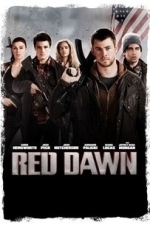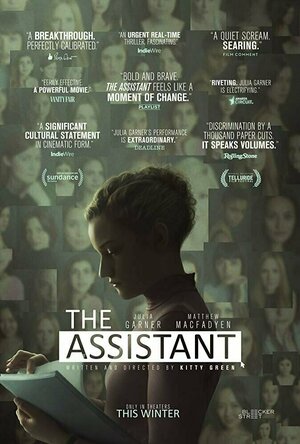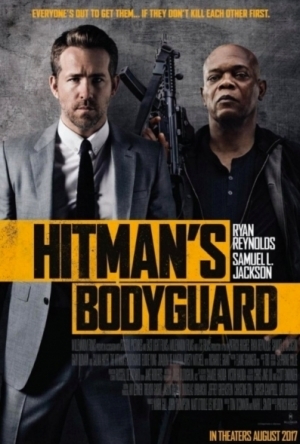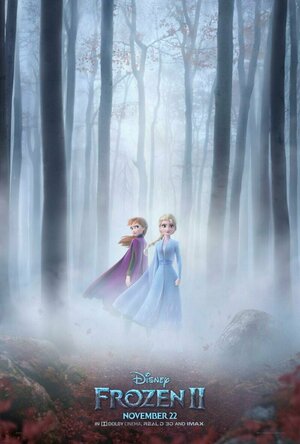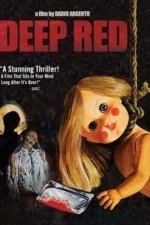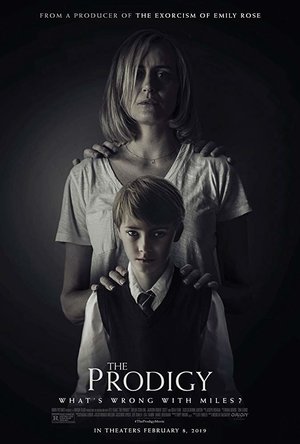Search
Search results
Gareth von Kallenbach (980 KP) rated Red Dawn (2012) in Movies
Aug 7, 2019
Back in 1984 in the late stages of the Cold War, the movie named “Red Dawn” was released. It starred several young actors and actresses who went on to a variety of success including Patrick Swayze, Charlie Sheen, Jennifer Grey, and Lea Thompson. The film follows a group of high school students who fight to defend their town, families, and country after an invasion of Soviet and Cuban forces occupies mainland America.
Despite being delayed for nearly 3 years due to financial issues, the new version of “Red Dawn” has arrived and also features an impressive young cast of future stars. Chris Hemsworth has gone on to find fame as Thor while Josh Hutcherson has found fame playing Peeta in “The Hunger Games”. The fact that this movie was filmed before either of those actors appeared in their signature roles allows the studio to now benefit from the increased name recognition of the cast.
Instead of a California town, the new film is set in Spokane, Washington where thanks to news clip segments at the beginning of the film, we understand that the country is involved in numerous conflicts around the globe and some question whether or not we have enough forces to secure our borders. Enter Jed Eckert (Hemsworth), who’s just returned home on leave after serving combat duty in the Middle East. His younger brother Matt (Josh Peck), is a quarterback at the local high school team and he bears resentment toward his brother for leaving shortly after the death of their mother. Their father is a well-respected member of the force and does his best to ensure harmony between the brothers as well as their local community.
The brothers are literally shaken awake by an airborne assault as North Korea lands troops throughout their community. Unsure what is happening, Jed, Matt, and several of their friends managed to escape into the wilderness and devise a plan for survival. Further complicating matters is the fact that Matt’s girlfriend Erica (Isabel Lucas), has been taken prisoner. Jed, with his military background quickly assumes control of the group, but Matt finds himself distracted from following orders and missions whenever he sees an opportunity to pursue Erica’s freedom.
The group calls itself “The Wolverines” after the local football team, and engages in a series of hit-and-run tactics against the invading forces. The plan is to make the occupation so costly that they will eventually give up. While they do have initial success, they soon realize that they are fighting against substantial odds not the least of which is their own internal conflicts and agendas as well as diminishing supplies.
When a recon group from the military under the command of Col. Andy Tanner (Jeffrey Dean Morgan), arrives and tells the Wolverines about a device that may hold the key to their victory. The two sides must team up in an all-out assault on enemy headquarters in an effort to save the day.
While the film has plenty of action, the leaps of logic and common sense it requires the audience to take are astronomical. I understand that for a film of this type you must suspend a lot of reality in order for it to work. I’m not supposed asked questions about the logistics of the enemy’s plan and their actions. Suffice it to say that I could think of at least a dozen factors that were not brought into play. While the enemy may indeed have the ability to shut down various electronics and defensive capabilities which enabled the invasion. That does not explain where the military outside of the combat zone is, why our allies and remaining military are not dropping bombs and nukes on North Korea in retaliation, and scores of other inconsistencies. It is essentially left to our imaginations as to why this is not happening and we’re just supposed to accept on blind faith that there’s a good reason for this even though the recon unit manages to infiltrate Spokane in a helicopter and makes mentions of Missouri to Arizona as being free of any enemy influence.
The best thing I can say about the film said if you are willing to overlook the abundance of plot holes and logic gaps, as well as some at times stiff acting and dialogue, there are some enjoyable action seems to be found. The young cast works well with one another and often gave a very energetic and physical performance.
If you are a fan of the original, you may enjoy this film from a nostalgia standpoint, otherwise leave your common sense behind, sit back and enjoy the ride.
Despite being delayed for nearly 3 years due to financial issues, the new version of “Red Dawn” has arrived and also features an impressive young cast of future stars. Chris Hemsworth has gone on to find fame as Thor while Josh Hutcherson has found fame playing Peeta in “The Hunger Games”. The fact that this movie was filmed before either of those actors appeared in their signature roles allows the studio to now benefit from the increased name recognition of the cast.
Instead of a California town, the new film is set in Spokane, Washington where thanks to news clip segments at the beginning of the film, we understand that the country is involved in numerous conflicts around the globe and some question whether or not we have enough forces to secure our borders. Enter Jed Eckert (Hemsworth), who’s just returned home on leave after serving combat duty in the Middle East. His younger brother Matt (Josh Peck), is a quarterback at the local high school team and he bears resentment toward his brother for leaving shortly after the death of their mother. Their father is a well-respected member of the force and does his best to ensure harmony between the brothers as well as their local community.
The brothers are literally shaken awake by an airborne assault as North Korea lands troops throughout their community. Unsure what is happening, Jed, Matt, and several of their friends managed to escape into the wilderness and devise a plan for survival. Further complicating matters is the fact that Matt’s girlfriend Erica (Isabel Lucas), has been taken prisoner. Jed, with his military background quickly assumes control of the group, but Matt finds himself distracted from following orders and missions whenever he sees an opportunity to pursue Erica’s freedom.
The group calls itself “The Wolverines” after the local football team, and engages in a series of hit-and-run tactics against the invading forces. The plan is to make the occupation so costly that they will eventually give up. While they do have initial success, they soon realize that they are fighting against substantial odds not the least of which is their own internal conflicts and agendas as well as diminishing supplies.
When a recon group from the military under the command of Col. Andy Tanner (Jeffrey Dean Morgan), arrives and tells the Wolverines about a device that may hold the key to their victory. The two sides must team up in an all-out assault on enemy headquarters in an effort to save the day.
While the film has plenty of action, the leaps of logic and common sense it requires the audience to take are astronomical. I understand that for a film of this type you must suspend a lot of reality in order for it to work. I’m not supposed asked questions about the logistics of the enemy’s plan and their actions. Suffice it to say that I could think of at least a dozen factors that were not brought into play. While the enemy may indeed have the ability to shut down various electronics and defensive capabilities which enabled the invasion. That does not explain where the military outside of the combat zone is, why our allies and remaining military are not dropping bombs and nukes on North Korea in retaliation, and scores of other inconsistencies. It is essentially left to our imaginations as to why this is not happening and we’re just supposed to accept on blind faith that there’s a good reason for this even though the recon unit manages to infiltrate Spokane in a helicopter and makes mentions of Missouri to Arizona as being free of any enemy influence.
The best thing I can say about the film said if you are willing to overlook the abundance of plot holes and logic gaps, as well as some at times stiff acting and dialogue, there are some enjoyable action seems to be found. The young cast works well with one another and often gave a very energetic and physical performance.
If you are a fan of the original, you may enjoy this film from a nostalgia standpoint, otherwise leave your common sense behind, sit back and enjoy the ride.
Bob Mann (459 KP) rated The Assistant (2020) in Movies
May 24, 2020
Julia Garner's performance (1 more)
The tension that manages to be created through a portrayal of the mundane
The movie seems to have a lot of haters on IMDB (a rating at the time of writing of 5.9)... but I refuse to follow "the pack" on this one... I thought it was great. It manages to make the mundane incredibly tense. This is this first (semi-)fictional feature from documentary-maker Kitty Green.... and in my book she does a knock-out job.
We first meet Jane (Julia Garner) at 'God-knows-what-o-clock' in the morning as she arrives at her workplace - a New York film-production company. First to arrive every morning, she turns on the lights, turns on the screens, makes the pot of coffee and cleans off stains from her boss's couch. The stain isn't coffee. A lost gold bracelet is recovered.
For we are in a truly toxic working environment here. 'The boss' - clearly modelled on Harvey Weinstein - is a bullying tyrant who can reduce Jane and her two male assistants (Jon Orsini and Noah Robbins) to quivering wrecks. "WHAT THE F*** DID YOU SAY TO HER" barks the boss down the phone at Jane, after she has had a perfectly reasonable phone conversation with the estranged Mrs Boss.
The toxicity is pervasive though throughout Miram..., sorry...., 'the company'. Jane is almost invisible to her other co-workers who don't give her eye-contact even when she's talking to them and barely register her presence when sharing a lift.
But bullying and workplace toxicity is just part of this story. A steady stream of starlets arrive in the office, like meat deliveries to a butcher. In a chilling sequence, the photocopier churns out photos of beautiful actresses.... a paper-based equivalent of swiping-left or -right in the selection process. None of the "if you... I will" discussions are shown, but they don't need to be: the inference is clear.
Jane is smart, slim and pretty... but not in an obvious 'Hollywood way'. "You'll be OK..." says a co-worker "you're not his type".
But someone who distinctly is "his type" is Sienna (Kristine Froseth), a "very very young" aspiring waitress-come-actress from Boise, who suddenly and unexpectedly arrives as a "new assistant"... to be promptly put up in a swanky hotel room. It's time to act... and Jane approaches the company HR manager (Matthew Macfadyen)....
An old Spielberg trick is to increase tension by keeping the "monster" hidden from view: cue the tanker driver from "Duel" and (for most of the film) the shark from "Jaws". Here, the boss is felt only as a malevolent force and never seen on screen. It's an approach that works brilliantly, focusing the emotion on the effect he has on those flamed.
There is also recognition that these powerful people are also hugely intelligent and manipulative. Seeing that Jane is a valuable asset, the public berating is sometimes followed up with a private email apology.... dripping a few words of encouragement and praise like a few drops of Methadone to a drug-addict.
This is an excellent movie and thoughtfully and elegantly directed. Following a normal day in Jane's work life.... albeit a day where perhaps the penny finally drops... is immersive and engaging. And at only 88 minutes long, the movie never outstays its welcome.
The performances are first rate. Julia Garner is magnificent, and in a year where the Oscars will be "interesting", here's a good candidate for Best Actress I would suggest if not Best Picture. Garner's an actress I'm unfamiliar with: the only one of her previous flicks I've seen was Sin City 2.
Also oily and impressive is Matthew Macfadyen as the HR manager. There's also a sparse but well-used score by Tamar-kali.
The one area I found poor was in the sound design. It's clearly filmed in an office environment, rather than on a sound stage, and unfortunately the combination of the acoustics and the New York accents makes some of the dialogue really difficult to hear. An example is a discussion between two co-workers in an office kitchen, which was completely indecipherable for me.
Should I watch this? In my view, definitely, yes. It's chilling and an insight into the terrible ordeal that many professional women in the film industry, and other industries, have had to put up with before the "Me Too" lid was blown off (and many probably still do). The most telling line in the film? At the end of the "Thanks" in the end-titles: "All those who shared their experiences".
(See the full graphical review at One Mann's Movies here https://bob-the-movie-man.com/2020/05/24/one-manns-movies-film-review-the-assistant-2020/ . Thanks).
We first meet Jane (Julia Garner) at 'God-knows-what-o-clock' in the morning as she arrives at her workplace - a New York film-production company. First to arrive every morning, she turns on the lights, turns on the screens, makes the pot of coffee and cleans off stains from her boss's couch. The stain isn't coffee. A lost gold bracelet is recovered.
For we are in a truly toxic working environment here. 'The boss' - clearly modelled on Harvey Weinstein - is a bullying tyrant who can reduce Jane and her two male assistants (Jon Orsini and Noah Robbins) to quivering wrecks. "WHAT THE F*** DID YOU SAY TO HER" barks the boss down the phone at Jane, after she has had a perfectly reasonable phone conversation with the estranged Mrs Boss.
The toxicity is pervasive though throughout Miram..., sorry...., 'the company'. Jane is almost invisible to her other co-workers who don't give her eye-contact even when she's talking to them and barely register her presence when sharing a lift.
But bullying and workplace toxicity is just part of this story. A steady stream of starlets arrive in the office, like meat deliveries to a butcher. In a chilling sequence, the photocopier churns out photos of beautiful actresses.... a paper-based equivalent of swiping-left or -right in the selection process. None of the "if you... I will" discussions are shown, but they don't need to be: the inference is clear.
Jane is smart, slim and pretty... but not in an obvious 'Hollywood way'. "You'll be OK..." says a co-worker "you're not his type".
But someone who distinctly is "his type" is Sienna (Kristine Froseth), a "very very young" aspiring waitress-come-actress from Boise, who suddenly and unexpectedly arrives as a "new assistant"... to be promptly put up in a swanky hotel room. It's time to act... and Jane approaches the company HR manager (Matthew Macfadyen)....
An old Spielberg trick is to increase tension by keeping the "monster" hidden from view: cue the tanker driver from "Duel" and (for most of the film) the shark from "Jaws". Here, the boss is felt only as a malevolent force and never seen on screen. It's an approach that works brilliantly, focusing the emotion on the effect he has on those flamed.
There is also recognition that these powerful people are also hugely intelligent and manipulative. Seeing that Jane is a valuable asset, the public berating is sometimes followed up with a private email apology.... dripping a few words of encouragement and praise like a few drops of Methadone to a drug-addict.
This is an excellent movie and thoughtfully and elegantly directed. Following a normal day in Jane's work life.... albeit a day where perhaps the penny finally drops... is immersive and engaging. And at only 88 minutes long, the movie never outstays its welcome.
The performances are first rate. Julia Garner is magnificent, and in a year where the Oscars will be "interesting", here's a good candidate for Best Actress I would suggest if not Best Picture. Garner's an actress I'm unfamiliar with: the only one of her previous flicks I've seen was Sin City 2.
Also oily and impressive is Matthew Macfadyen as the HR manager. There's also a sparse but well-used score by Tamar-kali.
The one area I found poor was in the sound design. It's clearly filmed in an office environment, rather than on a sound stage, and unfortunately the combination of the acoustics and the New York accents makes some of the dialogue really difficult to hear. An example is a discussion between two co-workers in an office kitchen, which was completely indecipherable for me.
Should I watch this? In my view, definitely, yes. It's chilling and an insight into the terrible ordeal that many professional women in the film industry, and other industries, have had to put up with before the "Me Too" lid was blown off (and many probably still do). The most telling line in the film? At the end of the "Thanks" in the end-titles: "All those who shared their experiences".
(See the full graphical review at One Mann's Movies here https://bob-the-movie-man.com/2020/05/24/one-manns-movies-film-review-the-assistant-2020/ . Thanks).
BankofMarquis (1832 KP) rated White Boy Rick (2018) in Movies
Sep 17, 2018
Would have been better if at actually WAS a McConaughey flick
If you believe the advertisement for the latest Matthew McConaughey flick, WHITE BOY RICK, you would think that it is...well...a Mathew McConaughey flick.
And you would be wrong.
Set in the mid-1980's, WHITE BOY RICK tells the true tale of Richard Wershe, Jr. a youth who gets involved in drug trafficking and becomes an informant for the FBI and who...eventually...becomes the person who has been incarcerated for the longest time in Michigan for a non-violent crime.
Sounds intriguing enough you say. And the cast list says that McConaughey is starring as Richard Wershe, so that could be interesting.
But you would be wrong again.
McConaughey stars as Richard Wershe, SENIOR, the father of Richard Wershe, Jr. who is played by Richie Merritt, in his film debut - and that's the problem. The actor that might have made the slightness of the screen play and story interesting is sidelined as a minor, supporting character and the lead role - the role that is front and center for the ENTIRE film - is played by someone in his screen debut who brings nothing interesting to the role.
Director Yann Demage does a credible enough job moving the plot forward from event to event, but doesn't craft an over-arching storyline - or character transformation - that makes each of these individual scenes work with each other. It's a series of vignettes, but not a total movie - at least not a total, emotionally satisfying film.
McConaughey, of course, is the best thing in this film - he has the "low-life, struggling, white trash" persona perfected. But he is in the film not nearly enough and his "big" scenes aren't big enough to make his appearance in this film worthwhile.
Jennifer Jason Leigh, Bruce Dern and Piper Laurie are wasted in even smaller supporting roles and the other actors/characters are just forgettable faces in forgettable situations. Only Bel Powley as White Boy Rick's sister is interesting to watch and has a character worth remembering.
There is a good movie in here, I'm sure, this just isn't it. Disappointing would be the best word I would use for it.
Letter Grade C+ (for McConaughey and Powley's presence - and for the sure fun of seeing Dern and Laurie together on the screen).
5 (out of 10) stars and you can take that to the Bank (ofMarquis)
And you would be wrong.
Set in the mid-1980's, WHITE BOY RICK tells the true tale of Richard Wershe, Jr. a youth who gets involved in drug trafficking and becomes an informant for the FBI and who...eventually...becomes the person who has been incarcerated for the longest time in Michigan for a non-violent crime.
Sounds intriguing enough you say. And the cast list says that McConaughey is starring as Richard Wershe, so that could be interesting.
But you would be wrong again.
McConaughey stars as Richard Wershe, SENIOR, the father of Richard Wershe, Jr. who is played by Richie Merritt, in his film debut - and that's the problem. The actor that might have made the slightness of the screen play and story interesting is sidelined as a minor, supporting character and the lead role - the role that is front and center for the ENTIRE film - is played by someone in his screen debut who brings nothing interesting to the role.
Director Yann Demage does a credible enough job moving the plot forward from event to event, but doesn't craft an over-arching storyline - or character transformation - that makes each of these individual scenes work with each other. It's a series of vignettes, but not a total movie - at least not a total, emotionally satisfying film.
McConaughey, of course, is the best thing in this film - he has the "low-life, struggling, white trash" persona perfected. But he is in the film not nearly enough and his "big" scenes aren't big enough to make his appearance in this film worthwhile.
Jennifer Jason Leigh, Bruce Dern and Piper Laurie are wasted in even smaller supporting roles and the other actors/characters are just forgettable faces in forgettable situations. Only Bel Powley as White Boy Rick's sister is interesting to watch and has a character worth remembering.
There is a good movie in here, I'm sure, this just isn't it. Disappointing would be the best word I would use for it.
Letter Grade C+ (for McConaughey and Powley's presence - and for the sure fun of seeing Dern and Laurie together on the screen).
5 (out of 10) stars and you can take that to the Bank (ofMarquis)
Gareth von Kallenbach (980 KP) rated The Hitman's Bodyguard (2017) in Movies
Jun 19, 2019
For professional Bodyguard Michael Bryce (Ryan Reynolds), life is good. As an elite member of his craft, he is well paid and lives a very good life keeping high-profile targets safe the world over. When things unexpectedly take a turn we find Michael two years on having hit the skids and struggling to claw his way back to prominence in the new film “The Hitman’s Bodyguard”.
Things become complicated for Michael as a despotic tyrant named Dukhovich (Gary Oldman) is on trial for war crimes and countless atrocities, and is about to go free due to removing all those who would be able to testify against him with credible evidence. That is with the exception of one Darius Kincaid (Samuel L. Jackson). Darius is incarcerated but makes a deal to testify in exchange for his wife (Selma Hayek), being granted freedom. Darius knows he is a marked man but takes the chance and under the watch of Interpol Agent Roussel (Elodie Yung), they set off.
Naturally things do not go as planned and the two find themselves fleeing for their lives with numerous deadly assassins hot on their heels. Unsure who she can trust, Roussel calls in Michael even though they have some seriously unresolved issues about one another that destroyed their previous relationship. Further complicating matters is the history Michael and Darius share which makes them naturally hostile to one another.
Nevertheless, Michael and Darius set off to reach the courtroom but the imposed deadline and face numerous dangers and hilarious situations along the way.
Jackson and Reynolds work very well with one another and their banter and chiding comes across as very natural. The jokes come more often than I expected but the film is very much an action film, and the sequences are intense, funny, and gripping, especially and extended chase and fight sequence along the canals and shopping district of Amsterdam.
While some may say that the film is just a variation on the Buddy Cop genre of old, the strong cast and the winning mix of jokes and action make the film a very pleasant surprise and one of my more enjoyable films of 2017. It was a highly-enjoyable thrill ride and one of the best films this summer.
If you are a fan of action, comedies, and the pairing of Jackson and Reynolds, do not miss this film.
http://sknr.net/2017/08/17/the-hitmans-bodyguard/
Things become complicated for Michael as a despotic tyrant named Dukhovich (Gary Oldman) is on trial for war crimes and countless atrocities, and is about to go free due to removing all those who would be able to testify against him with credible evidence. That is with the exception of one Darius Kincaid (Samuel L. Jackson). Darius is incarcerated but makes a deal to testify in exchange for his wife (Selma Hayek), being granted freedom. Darius knows he is a marked man but takes the chance and under the watch of Interpol Agent Roussel (Elodie Yung), they set off.
Naturally things do not go as planned and the two find themselves fleeing for their lives with numerous deadly assassins hot on their heels. Unsure who she can trust, Roussel calls in Michael even though they have some seriously unresolved issues about one another that destroyed their previous relationship. Further complicating matters is the history Michael and Darius share which makes them naturally hostile to one another.
Nevertheless, Michael and Darius set off to reach the courtroom but the imposed deadline and face numerous dangers and hilarious situations along the way.
Jackson and Reynolds work very well with one another and their banter and chiding comes across as very natural. The jokes come more often than I expected but the film is very much an action film, and the sequences are intense, funny, and gripping, especially and extended chase and fight sequence along the canals and shopping district of Amsterdam.
While some may say that the film is just a variation on the Buddy Cop genre of old, the strong cast and the winning mix of jokes and action make the film a very pleasant surprise and one of my more enjoyable films of 2017. It was a highly-enjoyable thrill ride and one of the best films this summer.
If you are a fan of action, comedies, and the pairing of Jackson and Reynolds, do not miss this film.
http://sknr.net/2017/08/17/the-hitmans-bodyguard/
Neon's Nerd Nexus (360 KP) rated Frozen II (2019) in Movies
Dec 2, 2019 (Updated Dec 2, 2019)
The Cucumber
Frozen 2 is not only better than Frozen but it also manages to develop its characters futher, delves deeper into its lore and overall tells a tale thats much darker and way more mature. Its apparent from the start of the movie that this sequel has more to say than just being a cheap cash in and as we check in on Elsa we see that although at first everything might seem happy it becomes aparent shes still struggling with demons and troubled on the inside. They clearly are not children anymore and thus dealing with the loss of both their parents is really starting to hit home as they enter the grieving process. This seems to effect Elsa in more ways than she can begin to process and as she struggles to tame her depression and get a hold on her mental health she closes up and alienates the people that are close to her. Its all incredibly dark stuff and at times it became so bleak that it had both adults and children in our screening breaking out in tears. Olaf does lighten things up occasionally however with some genuinely funny comedy, silly facts and some nice philosophy too with a role that feels important this time rather than there for comic relief. Pact with cool mythology and stuning visuals the film also manages to create not only a great coldness but an incredible warmth to really drive home its message of the importance of family and heritage. Elemental effects are extremely impressive too as is the improved animation quality and while the songs arnt as catchy this time they flow with more heart/meaning and with way more creativity visually too. Frozen 2 might not be perfect but as an adult it spoke to me more than the last one did and seeing it have the guts to mature and progress rather than replicate is a bold move I really respected. A truly magical fable full to the brim with lore and mythology that deals with such grown up isuess so respectfully and realistically that it will speak way more this time to adults than it does kids. Frozen 2 successfully teaches us all the message that we dont have to 'let It Go' or deal with our problems alone and by remembering and talking about those that are gone warms the heart and keeps them alive in us.

ECG Test - Challenge Your Interpreting Skills
Medical and Education
App
Test and improve your ECG interpreting skills with 1000+ samples in static images, and real-time...
Jesters_folly (230 KP) rated Deep Red (Profondo rosso) (1975) in Movies
Jul 19, 2021
Contains spoilers, click to show
Deep Red (aka Profondo rosso) is a thriller/slasher from Italian writer/director Dario Argento.
When Marcus Daly (David Hemmings) witnesses the murder of the women living in the flat below him he finds himself in a race to find the murderer before he becomes their next victim. The films killer follows a lot of what would become familiar tropes in slasher films, the killer is rarely seen and when they are seen they are covered u, they use a number of different ways to kill their victims and they have a habit of sneaking around. There isn't necessarily a a lot of blood from the kills, that is to say blood is sprayed around but when there is blood it is filmed in such a way that you can't miss it, in fact they eye is drawn to it.
Speaking of eyes there are a lot of them, Dario Argento has his own style of filming, he uses filters and strange camera angles and, in Deep Red a lot of closeups on eyes, sometimes just for scene transitions.
As well as being a Slasher, Deep Red is a mystery, as the film progresses Marcus the protagonist find clues as to the identity of the killer giving the viewer the chance to work out who it is as well. But there are red herrings and a lot of things that don't necessarily make sense. There is a clockwork boy, used only one by the killer, there is a creepy girl with a possibly mad farther, two facts that really don't affect the story.
As I said, Deep Red contains a lot of the Slasher tropes but it predates most of them, even beating Halloween by three years and so you can see that it has a big influence on the modern (well 80's so not so modern now) slashers.
The down side is that Deep Red is slow, there is a lot of talking, although contained in this are some clues as to the killers identity and the level of violence isn't quite as much as some of the more modern films, it does however beat some of it's slasher predecessors such as Psycho.
Over all Deep Red is a good film, slightly more mystery than slasher but with enough kills to keep a slasher fan happy. The story does plod along at is own pace but over all an enjoyable film.
When Marcus Daly (David Hemmings) witnesses the murder of the women living in the flat below him he finds himself in a race to find the murderer before he becomes their next victim. The films killer follows a lot of what would become familiar tropes in slasher films, the killer is rarely seen and when they are seen they are covered u, they use a number of different ways to kill their victims and they have a habit of sneaking around. There isn't necessarily a a lot of blood from the kills, that is to say blood is sprayed around but when there is blood it is filmed in such a way that you can't miss it, in fact they eye is drawn to it.
Speaking of eyes there are a lot of them, Dario Argento has his own style of filming, he uses filters and strange camera angles and, in Deep Red a lot of closeups on eyes, sometimes just for scene transitions.
As well as being a Slasher, Deep Red is a mystery, as the film progresses Marcus the protagonist find clues as to the identity of the killer giving the viewer the chance to work out who it is as well. But there are red herrings and a lot of things that don't necessarily make sense. There is a clockwork boy, used only one by the killer, there is a creepy girl with a possibly mad farther, two facts that really don't affect the story.
As I said, Deep Red contains a lot of the Slasher tropes but it predates most of them, even beating Halloween by three years and so you can see that it has a big influence on the modern (well 80's so not so modern now) slashers.
The down side is that Deep Red is slow, there is a lot of talking, although contained in this are some clues as to the killers identity and the level of violence isn't quite as much as some of the more modern films, it does however beat some of it's slasher predecessors such as Psycho.
Over all Deep Red is a good film, slightly more mystery than slasher but with enough kills to keep a slasher fan happy. The story does plod along at is own pace but over all an enjoyable film.
Kim Pook (101 KP) rated The Prodigy (2019) in Movies
Sep 25, 2020
Contains spoilers, click to show
A woman is seen running away from something or someone and ends up being almost hit by an elderly driver, we discover the woman has had her hand cut off, how did this happen? Why did it happen?
Forward to the present day and a pregnant woman is going into early labour, in between scenes of her giving birth we see this guy who gets shot down by police, he is holding a severed hand (remember the lady at the beginning?)....
Within months of baby Miles being born, his mother starts to notice strange things such as not crying during his shots and even saying words. It is put down to him being a genius. However, he is not really a genius at all he noticeably quite evil. This is evident when he squashes a bug in his bare hands at 5 years old, harms his babysitter at age 8, and starts speaking a strange language in his sleep.
One day Miles end up receiving psychiatric help after beating a child in his class with a wrench. Nobody can understand what's going on though and it seems Miles is hearing voices in his head and reacting to what they tell him to do. Miles' mother Sarah is eventually informed that Miles has a spirit living inside of him and that spirit is dangerous, Sarah refuses to believe this at first but after a disturbing situation happens at home she begins to believe that it must be true and after a series of events, finally gets him help to try and rid him of the evil inside of him.
I do find it shocking sometimes what they get young children to say in movies, but especially in this one. Considering the type of movie it is though its understandable and the boy who plays Miles does a fantastic job, down to the facial expressions, so you always know when it is Miles and when it's the spirit.
The movie very much reminds me of 'orphan' - another film with an evil adult/child. The ending was quite a bummer though and makes everything that happened in the movie a complete waste of time. It was interesting watching it unfold though and the end does leave it open for a sequel.
Forward to the present day and a pregnant woman is going into early labour, in between scenes of her giving birth we see this guy who gets shot down by police, he is holding a severed hand (remember the lady at the beginning?)....
Within months of baby Miles being born, his mother starts to notice strange things such as not crying during his shots and even saying words. It is put down to him being a genius. However, he is not really a genius at all he noticeably quite evil. This is evident when he squashes a bug in his bare hands at 5 years old, harms his babysitter at age 8, and starts speaking a strange language in his sleep.
One day Miles end up receiving psychiatric help after beating a child in his class with a wrench. Nobody can understand what's going on though and it seems Miles is hearing voices in his head and reacting to what they tell him to do. Miles' mother Sarah is eventually informed that Miles has a spirit living inside of him and that spirit is dangerous, Sarah refuses to believe this at first but after a disturbing situation happens at home she begins to believe that it must be true and after a series of events, finally gets him help to try and rid him of the evil inside of him.
I do find it shocking sometimes what they get young children to say in movies, but especially in this one. Considering the type of movie it is though its understandable and the boy who plays Miles does a fantastic job, down to the facial expressions, so you always know when it is Miles and when it's the spirit.
The movie very much reminds me of 'orphan' - another film with an evil adult/child. The ending was quite a bummer though and makes everything that happened in the movie a complete waste of time. It was interesting watching it unfold though and the end does leave it open for a sequel.

Solar Walk Lite - Planetarium 3D: Planets, Satelli
Reference and Education
App
Solar Walk Lite is a great astronomy application that turns your device into an interactive...

Speed Anatomy (Quiz)
Education and Games
App
How fast can you point to your liver, gall bladder or incisor? Do you know the difference between...
